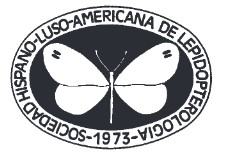Evaluation of the type of bait in catching Nymphalidae in Van Someren-Rydon traps in the National Park Yanachaga-Chemillén-Paujil sector, Pasco, Peru (Lepidoptera: Papilionoidea)
DOI:
https://doi.org/10.57065/shilap.915Keywords:
Lepidoptera, Papilionoidea, Nympahlidae, biological monitoring, diversity, faunistic studies, frugivorous, sampling techniques, tropical forest, PeruAbstract
The use of baited traps for the study of Lepidoptera has increased in recent decades, offering advantages and disadvantages compared to direct methods of capture. However, studies evaluating the attractiveness of different types of different baits are scarce, and published works are limited to using the standard bait consisting of fermented fruit with sugar. This study evaluates the variation in the attractiveness and effectiveness of three types of bait (fermented fruit, rotting fish, and human feces) in the capture of Lepidoptera in Van Someren-Rydon traps (VSR) in the National Park Yanachaga-Chemillén (PNYCh), sector Paujil, by the use of VSR located in sites with different canopy cover. Certain species were found to visit all three types of bait, e.g. Archaeoprepona demophon (Linnaeus, 1758) and Diaethria clymena (Cramer, 1775), others only two of these, e. g. Memphis glauce (C. Felder & R. Felder, 1862), Memphis moruus (Fabricius, 1775), Adelpha mesentina (Cramer, 1777), Temenis laothoe (Cramer, 1777), and some were unique to one type of bait, e. g. Zaretis itys (Cramer, 1777), Ancyluris etias (Saunders, 1859), Catoblepia berecynthia (Cramer, 1777), Catonephele numilia (Cramer, 1775). Furthermore, it was found that the fruit bait presents significant differences concerning the rotting fish and feces baits, however, it presented the least number of individuals and species attracted. Meanwhile, rotting fish and feces presented a similar attractiveness in species number and quantity of individuals. The results suggest the bait’s importance in capturing Lepidoptera and, consequently, their potential relevance in the elaboration of subsequent ecological studies
Downloads
Global Statistics ℹ️
|
1186
Views
|
263
Downloads
|
|
1449
Total
|
|
References
Aduse-Poku, K., William, O., Oppong, S., Larsen, T., Ofori-Boateng, C., & Molleman, F. (2012). Spatial and temporal variation in butterfly biodiversity in a West African forest: Lessons for establishing efficient rapid monitoring programmes. African Journal of Ecology, 50, 326-334. https://doi.org/10.1111/j.1365-2028.2012.01328.x DOI: https://doi.org/10.1111/j.1365-2028.2012.01328.x
Andrade-C, M. G., Henao, E. R., & Triviño, P. (2013). Técnicas y procesamiento para la recolección, preservación y montaje de Mariposas en estudios de biodiversidad y conservación. (Lepidoptera: Hesperioidea - Papilionoidea). Revista de la Academia Colombiana de Ciencias Exactas, Físicas y Naturales, 37(144), 311-325. https://doi.org/10.18257/raccefyn.12 DOI: https://doi.org/10.18257/raccefyn.12
Bandini, D., Prado, P., Brown, K., & Freitas A. (2010). Temporal Diversity Patterns and Phenology in Fruit-feeding Butterflies in the Atlantic Forest, Biotropica 42(6), 710-716. https://doi.org/10.1111/j.1744-7429.2010.00648.x DOI: https://doi.org/10.1111/j.1744-7429.2010.00648.x
Barbosa, E., Nogueira, De Vasconcelos R., Mariano-Neto, E., Viana, B., & Zikán Cardoso, M. (2017). Positive forestry: The effect of rubber tree plantations on fruit feeding butterfly assemblages in the Brazilian Atlantic Forest. Forest Ecology and Management, 397, 150-156. https://doi.org/10.1016/j.foreco.2017.04.043 DOI: https://doi.org/10.1016/j.foreco.2017.04.043
Bokelaar, J. (2017). Scrumptious butterfly bait: A study of bait trapping techniques & a butterfly inventory in Un poco del Chocó (Ecuador). Hogeschool, 6-33. https://doi.org/10.13140/RG.2.2.34071.06564
Bonebrake, T. C., Ponisio, L. C., Boggs, C. L., & Ehrlich, P. R. (2010). More than just indicators: A review of tropical butterfly ecology and conservation. Biological Conservation, 143,1831-1841. https://doi.org/10.1016/j.biocon.2010.04.044 DOI: https://doi.org/10.1016/j.biocon.2010.04.044
Bossart, J. L., & Opuni-Frimpong, E. (2009). Distance from edge determines fruit-feeding butterfly community diversity in Afrotropical Forest fragments. Environmental Entomology, 38(1), 43-52. https://doi.org/10.1603/022.038.0107 PMid:19791597 DOI: https://doi.org/10.1603/022.038.0107
Brown, K. S. (1972). Maximizing daily butterfly counts. Journal of the Lepidopterists’ Society, 26(3), 183-196.
Checa, M., Barragán, A., Rodríguez, J., & Christman, M. (2009). Temporal abundance patterns of butterfly communities (Lepidoptera: Nymphalidae) in the Ecuadorian Amazonia and their relationship with climate. Annales de la Société entomologique de France (N.S.), 45(4), 470-486. https://doi.org/10.1080/00379271.2009.10697630 DOI: https://doi.org/10.1080/00379271.2009.10697630
Checa, M. F., Donoso, D. A., Rodriguez, J., Levy, E., Warren, A., & Willmott, K. (2018). Combining sampling techniques aids monitoring of tropical butterflies. Insect Conservation and Diversity, 12(4), 362-372. https://doi.org/10.1111/icad.12328 DOI: https://doi.org/10.1111/icad.12328
Costa-Pereira, R., Roque, F. O., Constantino, P. A. L., Sabino, J., & Uehara-Prado, M. (2013). Monitoramento in situ da biodiversidade: Proposta para um sistema brasileiro de monitoramento da biodiversidade. ICMBio.
Devries, P., Murray, D., & Lande, R. (1997). Species diversity in vertical, horizontal, and temporal dimensions of a fruit-feeding butterfly community in an Ecuadorian rainforest. Biological Journal of the Linnean Society, 62(3), 343-364. https://doi.org/10.1111/j.1095-8312.1997.tb01630.x DOI: https://doi.org/10.1111/j.1095-8312.1997.tb01630.x
Ebert, H. (1969). On the frequency of butterflies in eastern Brazil, with a list of the butterfly fauna of Poços de Caldas. Minas Gerais. Journal of the Lepidopterists’ Society, 23 (Supplement 3), 1-48.
Figgis, P., Mackey, B., Fitzsimons, J., Irving, J., & Clarke, P. (2015). Valuing Nature: Protected Areas and Ecosystem Services. Australian Conservation Foundation.
Filgueiras, B., Melo, D., Uehara-Prado, M., Freitas, A. V. L., Leal, I., & Tabarelli, M. (2019). Compensatory dynamics on the community structure of fruit-feeding butterflies across hyper-fragmented Atlantic Forest habitats. Ecological Indicators, 98, 276-284. https://doi.org/10.1016/j.ecolind.2018.11.005 DOI: https://doi.org/10.1016/j.ecolind.2018.11.005
Freitas, A. V. L., Agra Iserhard, C., Pereira Santos, J., Oliviera, J. Y., Bandini, D., Alves, D.H., Batista, A.H., Marini-Filho, O. J., Mattos, G., & Uehara-Prado, M. (2014). Studies with butterfly bait traps: an overview. Revista Colombiana de Entomología, 40(2), 203-212.
Gallice, G. (2016). Clearwing butterflies (Nymphalidae: Ithomini). Florida Museum of Natural History.
Garwood, K., & Jaramillo, V. J. G. (2017a). Catálogo de mariposas Papilionidae de Colombia y del neotrópico - Catalog of Swallowtails of Colombia and the neotropics. http://www.butterflycatalogs.com.
Garwood, K., & Jaramillo, V. J. G. (2017b). Catálogo de mariposas Nymphalidae de Colombia y del neotrópico - Catalog of Brushfoots of Colombia and the neotropics. http://www.butterflycatalogs.com.
Garwood, K., & Jaramillo, V. J. G. (2017c). Catálogo de mariposas Pieridae de Colombia y del neotrópico - Catalog of Whites and Sulphurs of Colombia and the neotropics. http://www.butterflycatalogs.com.
Garwood, K., & Jaramillo, V. J. G. (2017d). Catálogo de mariposas Riodinidae de Colombia y del neotrópico - Catalog of Colombian and the neotropical Metalmarks. http://www.butterflycatalogs.com.
Grados, J., Lamas, G., Azorsa, F., & Carbonel, S. (2008). Diversidad de Papilionoidea, Hesperioidea, Noctuoidea: Arctiidae (Lepidoptera) y Formicidae (Hymenoptera) del Parque Nacional Yanachaga-Chemillén [Informe].
Hamer, K., Hill, J., Mustaffa, N., Benedick, S., Sherratt, N., Chey, V., & Maryati, M. (2005). Temporal Variation in Abundance and Diversity of Butterflies in Bornean Rain Forests: Opposite Impacts of Logging Recorded in Different Seasons. Journey of Tropical Ecology, 21(4), 411-425. https://doi.org/10.1017/S0266467405002361 DOI: https://doi.org/10.1017/S0266467405002361
Hammer, Ø., Harper, D. A. T., & Ryan, P. D. (2001). PAST: Paleontological statistics software package for education and data analysis. Palaeontologia Electronica, 4(1), 9. http://palaeo-electronica.org/2001_1/past/issue1_01.htm
Hughes, J. B., Daily, G., & Ehrlich, P. R. (1998). Use of fruit bait traps for monitoring of butterflies (Lepidoptera: Nymphalidae). Revista de Biología Tropical, 46(3), 697-704. https://doi.org/10.15517/rbt.v46i3.20199 DOI: https://doi.org/10.15517/rbt.v46i3.20199
Iserhard, C. A., & Freitas, A. V. L. (2013). Maximized sampling of butterflies to detect temporal changes in tropical communities. Journal of Insect Conservation, 17(3), 615-622. https://doi.org/10.1007/s10841-013-9546-z DOI: https://doi.org/10.1007/s10841-013-9546-z
Jew, E., Loos, J., Dougill, A., Sallu, S., & Benton, T. (2015). Butterfly communities in miombo woodland: Biodiversity declines with increasing woodland utilization. Biological Conservation, 192, 436-444. https://doi.org/10.1016/j.biocon.2015.10.022 DOI: https://doi.org/10.1016/j.biocon.2015.10.022
Laura, C. R. (2007). Parque Nacional Yanachaga-Chemillén. Universidad de Guadalajara.
Lecrom, J. F., Constantino, L. M., & Salazar, J. A. (2002). Mariposas de Colombia. Pieridae (Vol. 2). Carlec Ltda. Martins, L., Araujo, J., Martins, A., Duarte, M., & Azevedo, G. (2017). Species diversity and community structure of fruit-feeding butterflies (Lepidoptera: Nymphalidae) in an eastern Amazonian Forest. Papéis Avulsos de Zoologia, 57(38), 481-489. https://doi.org/10.11606/0031-1049.2017.57.38 DOI: https://doi.org/10.11606/0031-1049.2017.57.38
Öckinger, E., Dannestam, A., & Smith, H. (2009). The importance of fragmentation and habitat quality of urban grasslands for butterfly diversity. Landscape and Urban Planning, 93(1), 31-37. https://doi.org/10.1016/j.landurbplan.2009.05.021 DOI: https://doi.org/10.1016/j.landurbplan.2009.05.021
Olarte-Quiñonez, C. A., Carrero-Sarmiento, D., Viloria, A. L., & Ríos-Malaver, I. C. (2021). Patrones de diversidad de las mariposas de la subtribu Pronophilina (Lepidoptera: Nymphalidae: Satyrinae) en un gradiente altitudinal del Cerro de Tierra Negra, Cordillera Oriental, Norte de Santander, Colombia. Boletín Científico Centro De Museos Museo De Historia Natural, 25(2): 197-218. https://doi.org/10.17151/bccm.2021.25.2.12 DOI: https://doi.org/10.17151/bccm.2021.25.2.12
Orlandin, E., Piovesan, M., D’agostini, F., & Carneiro, E. (2019). Use of microhabitats affects butterfly assemblages in a rural landscape. Papéis Avulsos de Zoologia, 59, 1-23. https://doi.org/10.11606/1807-0205/2019.59.49 DOI: https://doi.org/10.11606/1807-0205/2019.59.49
Pozo, C., Llorente, J. B., Salas, N., Maya, A., & Vargas, I. F. (2008). Seasonality and phenology of butterflies (Lepidoptera: Pieridae, Papilionidae, Nymphalidae, Lycaenidae and Hesperiidae) in Calakmul, biosphere reserve. Florida Entomologist, 91(3), 407-422. https://doi.org/10.1653/0015-4040(2008)91. DOI: https://doi.org/10.1653/0015-4040(2008)91[407:SAPOTB]2.0.CO;2
Panjaitan, R., Hidayat, P., Buchori, D., Peggie, D., Sakti, I., Drescher, J., & Scheu, J. (2019). Diversity of butterflies (Lepidoptera) caught by using fruit traps in Bukit Duabelas and Harapan forest landscape, Jampi. AIP Conference Proceedings, 2120, 1-7. https://doi.org/10.1063/1.5115732 DOI: https://doi.org/10.1063/1.5115732
Purwanto, A., Harsanto, F. A., Marchant, N. C., Houlihan, P. R., Ross, K., Tremlett, C., & Harrison, M. E. (2015). Good Practice Guidelines: Butterfly Canopy Trapping. Orangutan Tropical Peatland Project.
R Core Team. (2020). R: A language and environment for statistical computing. R Foundation for Statistical Computing, Vienna, Austria. https://www.R-project.org/
Rengifo, H., & Montero, P. (2010). Diversidad de mariposas diurnas (Lepidoptera: Rophalocera) en los bosques de tierra firme adyacentes a la comunidad campesina San Rafael, Loreto-Perú [Tesis pregrado]. Universidad Nacional de la Amazonía Peruana.
Ribeiro, D. B., & Freitas, A. V. L. (2012). The effect of reducedimpact logging on fruit-feeding butterflies in Central Amazon, Brazil. Journal of Insect Conservation, 16(5), 733-744. https://doi.org/10.1007/s10841-012-9458-3 DOI: https://doi.org/10.1007/s10841-012-9458-3
Rochat, E., Manel, S., Deschamps-Cottin, M., Widmer, I., & Joost, S. (2017). Persistence of butterfly populations in fragmented habitats along urban density gradients: motility helps. Heredity, 119(5), 328-338. https://doi.org/10.1038/hdy.2017.40 PMid:28792492 PMCid:PMC5637364 DOI: https://doi.org/10.1038/hdy.2017.40
Rydon, A. (1964). Notes on the use of butterfly traps in East Africa. Journal of the Lepidopterists’ Society, 18(1), 51-58.
Schulze, C. H., Linsenmair, K. E., & Fiedler, K. (2001). Understory versus canopy: patterns of vertical stratification and diversity among Lepidoptera in a Bornean rain forest. Plant Ecology, 153(1-2), 133-152. https://doi.org/10.1023/A:1017589711553 DOI: https://doi.org/10.1007/978-94-017-3606-0_11
Sheskin, D. J. (2003). Handbook of Parametric and Nonparametric Statistical Procedures. CRC Press. https://doi.org/10.1201/9781420036268 PMid:12636158 DOI: https://doi.org/10.1201/9781420036268
Stevens, V. M., Turlure, C., & Baguette, M. (2010). A meta-analysis of dispersal in butterflies. Biological Reviews, 85, 625-642. https://doi.org/10.1111/j.1469-185X.2009.00119.x PMid:20055815 DOI: https://doi.org/10.1111/j.1469-185X.2009.00119.x
Sung-Soo, K., & Tae-Sung, K. (2018). Changes in butterfly assemblages and increase of open-land inhabiting species after forest fires. Journal of Asia-Pacific Biodiversity, 11(1), 39-48. https://doi.org/10.1016/j.japb.2017.11.004 DOI: https://doi.org/10.1016/j.japb.2017.11.004
Van Swaay, C., Regan, E., Ling, M., Bozhinovska, E., Fernandez, M., Marini-Filho, O. J., Huertas, B., Phon, C.-K., Körösi, Á., Meerman, J., Peer, G., Uehara-Prado, M., Sáfián, S., Sam, L., Shuey, J., Taron, D., Terblanche, R., & Underhill, L. G. (2015). Guidelines for Standardised Global Butterfly Monitoring. GEO BON Technical Series, 1, 1-32.
Willmott, K. (2003). The genus Adelpha: its systematics, biology, and biogeography (Lepidoptera: Nymphalidae: Limenitidini). Scientic Publishers.
Whitworth, A., Huarcaya, R. P., Mercado, H. G., Braunholtz, L. D., & Macleod, R. (2018). Food for thought. Rainforest carrion-feeding butterflies are more sensitive indicators of disturbance history than fruit feeders. Biological Conservations, 217, 383-390.
https://doi.org/10.1016/j.biocon.2017.11.030 DOI: https://doi.org/10.1016/j.biocon.2017.11.030
Published
How to Cite
Issue
Section
License

This work is licensed under a Creative Commons Attribution 4.0 International License.
The author SS retains his trademark and patent rights to any process or procedure within the article.
The author retains the right to share, distribute, perform and publicly communicate the article published in SHILAP Revista de lepidopterología, with initial acknowledgement of its publication in SHILAP Revista de lepidopterología.
The author retains the right to make a subsequent publication of his work, from using the article to publishing it in a book, provided that he indicates its initial publication in SHILAP Revista de lepidopterología.
Each submission to SHILAP Revista de lepidopterología must be accompanied by an acceptance of copyright and acknowledgement of authorship. By accepting them, authors retain copyright of their work and agree that the article, if accepted for publication by SHILAP Revista de lepidopterología, will be licensed for use and distribution under a "Creative Commons Attribution 4.0 International" (CC BY 4.0) licence that allows third parties to share and adapt the content for any purpose giving appropriate credit to the original work.
You may read here the basic information and the legal text of the license. The indication of the CC BY 4.0 License must be expressly stated in this way when necessary.
As of 2022, the content of the print and digital version is licensed under a "Creative Commons Attribution 4.0 International License" (CC BY 4.0), licence that allows third parties to share and adapt the content for any purpose giving appropriate credit to the original work.
Previous content in the journal was published under a traditional copyright licence; however, the archive is available for free access.
When using the contents of SHILAP Revista de lepidopterología published before 2022, including figures, tables or any other material in printed or electronic format belong to the authors of the articles, the authors must obtain the permission of the copyright holder. Legal, financial and criminal liabilities in this respect belong to the author(s).
In application of the Principle of Priority of the International Code of Zoological Nomenclature, no other version than the one published by the publisher may be deposited in repositories, personal websites or similar.





























